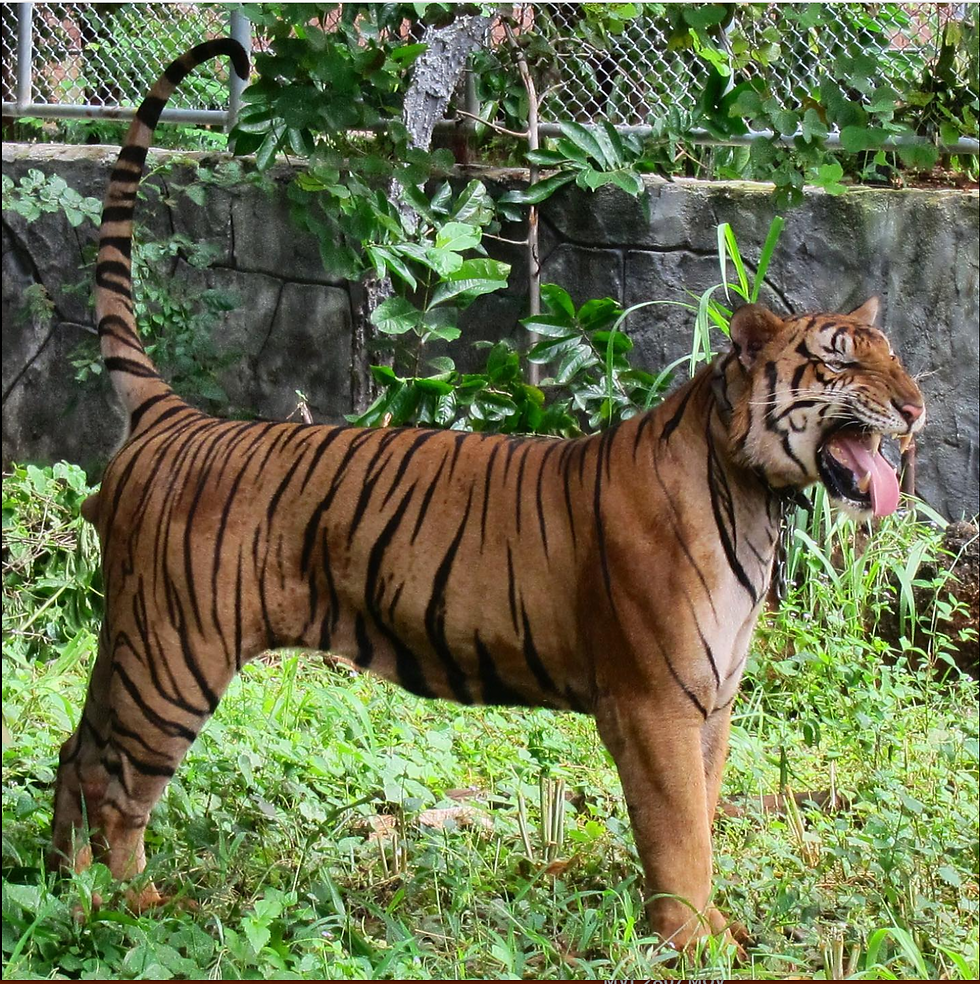TAKING A SNIFF
- For Tigers
- Feb 26, 2021
- 2 min read
Sensory enrichment - olfactory
Tigers have a good sense of smell, which is often used to determine who has been present in their territory. Tigers can be seen sniffing trees or bushes to see which tiger, or other animal, has sprayed or scent marked there recently. By providing scent enrichment in various ways, captive tigers can be encouraged to perform this behaviour of exploring and territorial scent marking, even if there are no other tigers or animals in or near their enclosure.

Spraying the smell
One of the first tasks when implementing a scent enrichment program is to find suitable scents to be sprayed. These scents can be sprayed at strategic points around the enclosure and also in the indoor areas – it is important to create an interesting environment in these areas too, especially as tigers spend a good portion of their lives in these indoor areas. Depending on what these scents are, the tiger may be seen to spray their urine over them or interact with them in a different way such as cheek swiping and rubbing on the scent. This indicates interest.
Scents can be sprayed at strategic points around the indoor and outdoor areas and can also be sprayed on enrichment items such as burlap sacks, cardboard boxes, balls and so on, which can encourage interaction with that item.
What smell to use?

The choice of scent depends on the type of behaviour that you want to elicit, such as exploratory or territorial. If hunting behaviour is desired, the use of prey scents could be used. This can be done through collecting urine or faeces from another species and placing or spraying this around the enclosure. Alternatively, the scent could be on hay or straw used by a prey species and placed inside burlap sacks or other toys to encourage the tiger to tear open the sack to smell what is inside – a similar action to a hunt.
Other natural and man-made scents can also be used. Different spices [1], perfume (Obsession for Men by Calvin Klein seems to be a favourite!), pine cones and pine trees, or menthol-based mouth wash all seem to be popular, though the preferred scent does depend on the tiger. These types of scents tend to elicit rubbing behaviours and in the case of the mouth wash Listerine, some tigresses even appeared to become aroused, interacting with nearby males in a more enticing manner.

The final option is to use scents from other predators and other tigers. This can be achieved in the same way as providing prey scents – bottling and spraying predator or other tiger urine in the enclosure. Alternatively, a potentially easier option is to simply perform enclosure rotations, where animals are kept in different enclosures on different days or times. This is possible with a range of different species and encourages more exploratory behaviour as well as inducing scent marking to reaffirm boundaries [2].
References
1. Skiebel, A., Trevino, H.S. and Naugher, K. (2007). Comparison of several types of enrichment for captive felids. Zoo Biology. https://doi.org/10.1002/zoo.20147
2. White, B.C., Houser, L.A., Fuller, J.A., Taylor, S. and Elliott, J.L.L. (2003). Activity-Based Exhibition of Five Mammalian Species: Evaluation of Behavioral Changes. Zoo Biology, 22: pp. 269–285.




Comments